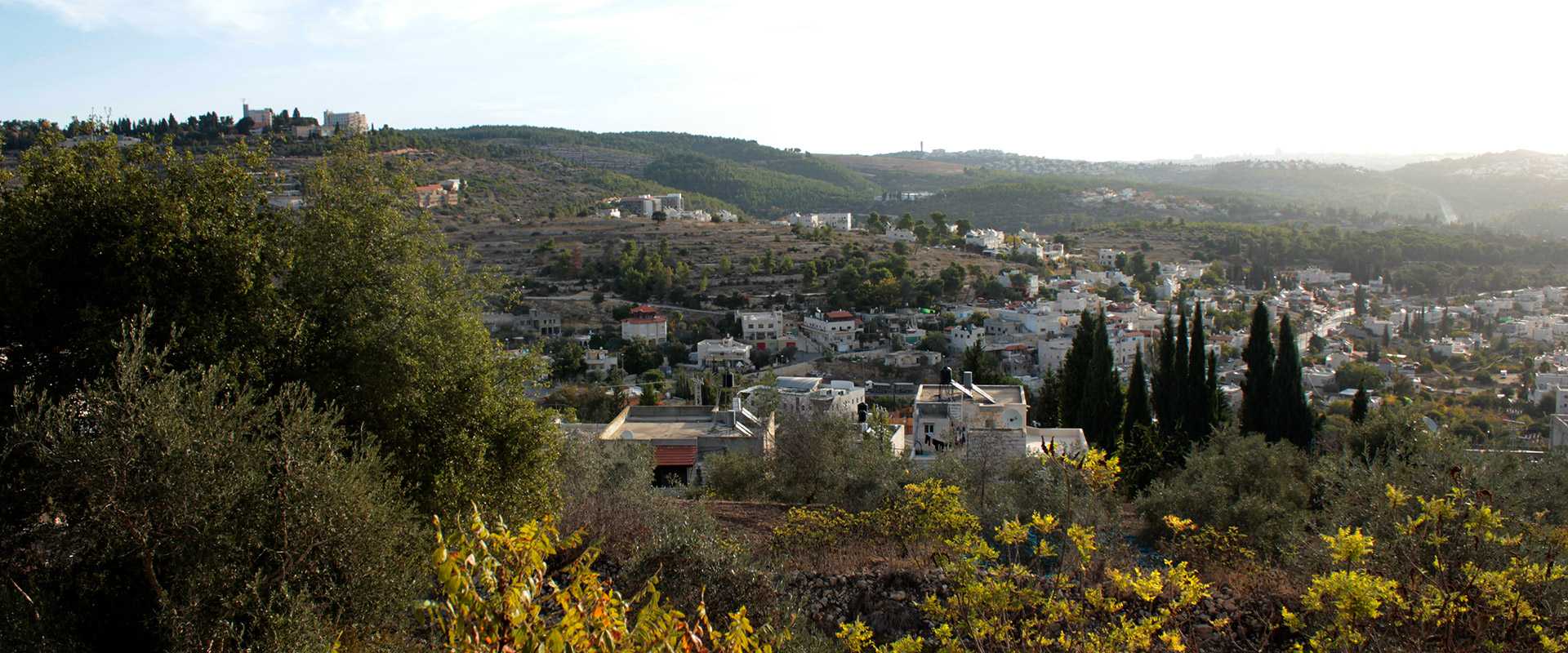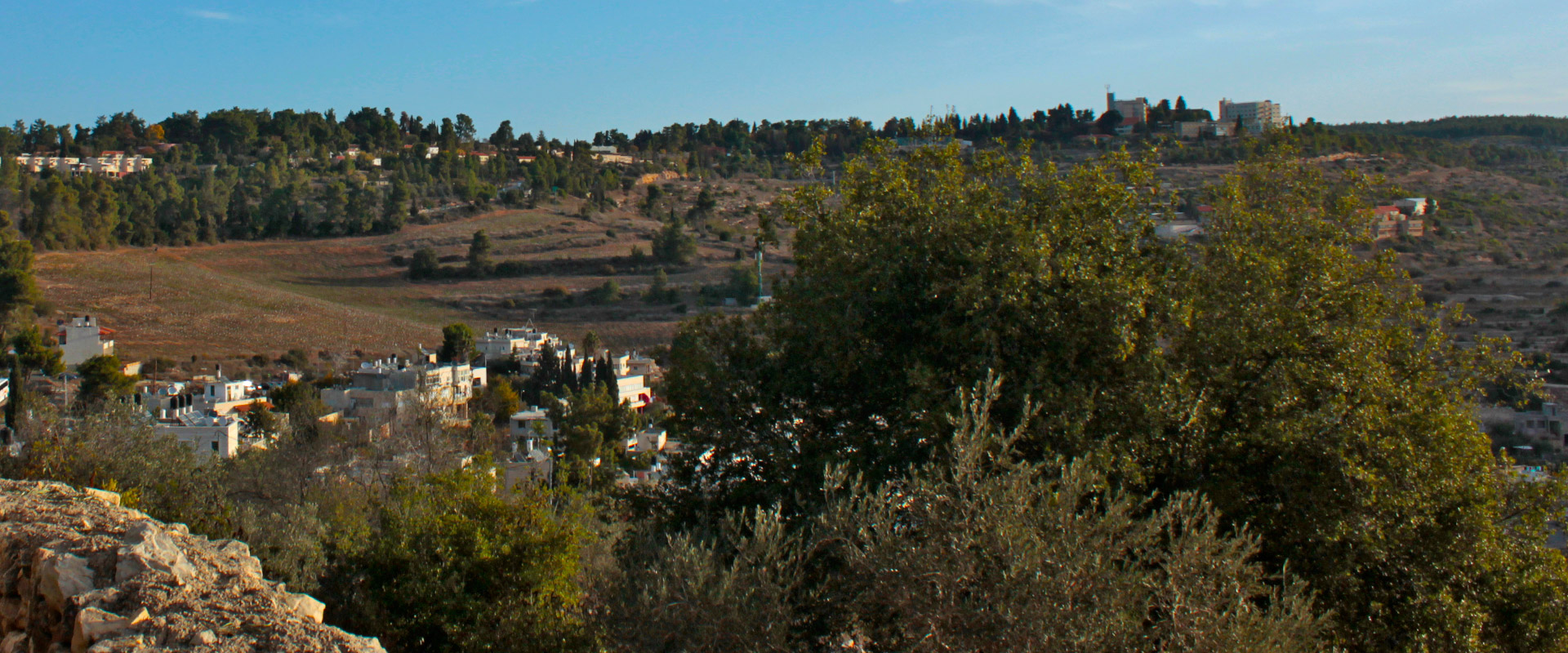Abu Ghosh is an Arab Israeli town well-known for its beautiful churches, classical music festivals, delicious hummus restaurants and its friendly relations with the Jewish population.
Located in the Jerusalem Hills, just 10 miles northwest of Jerusalem, the town of Abu Gosh is one of most visited places in Israel today.
According to biblical sources, "After the disaster in Beth Shemesh the ark was moved again (1 Sam. 6:21), this time to Kiriath Jearim, (modern Abu Ghosh, about 10 miles northwest of Jerusalem)."
Eugene H. Merrill, 1 Samuel, The Bible Knowledge Commentary; ed. John F. Walvoord and Roy B. Zuck; Wheaton: Victor Books, 1985, 1:438.
The ark had been last mentioned in connection with the family of Abinadab, whose son Eleazar had charge of it at Kiriath-jearim, but since then twenty years had passed, it is described in the book of 1 Sam. 7:1–2.
And the men of Bethshemesh said, Who is able to stand before this holy LORD God? and to whom shall he go up from us? And they sent messengers to the inhabitants of Kirjathjearim, saying, The Philistines have brought again the ark of the LORD; come ye down, and fetch it up to you.
And the men of Kirjathjearim came, and fetched up the ark of the LORD, and brought it into the house of Abinadab in the hill, and sanctified Eleazar his son to keep the ark of the LORD. And it came to pass, while the ark abode in Kirjathjearim, that the time was long; for it was twenty years: and all the house of Israel lamented after the LORD.
1 Samuel 6:20–7:2 KJV

Kiriath Jearim in the conquests of Joshua
And the children of Israel journeyed, and came unto their cities on the third day. Now their cities were Gibeon, and Chephirah, and Beeroth, and Kirjathjearim. And the children of Israel smote them not, because the princes of the congregation had sworn unto them by the LORD God of Israel. And all the congregation murmured against the princes. But all the princes said unto all the congregation, We have sworn unto them by the LORD God of Israel: now therefore we may not touch them. This we will do to them; we will even let them live, lest wrath be upon us, because of the oath which we sware unto them. And the princes said unto them, Let them live; but let them be hewers of wood and drawers of water unto all the congregation; as the princes had promised them.
Joshua 9:17–21 KJV
It is surprising, therefore, to find the name Baale-judah used instead, except that the names are alternatives in Joshua 15:9, where it is called Baalah (cf. Josh. 15:60, where the name is Kiriath-baal). The names compounded with Baal suggest that it may have been a Canaanite high place; Kiriath-jearim means ‘city of forests’, a name which would again be appropriate today in the light of the reafforestation that is transforming the landscape to the west of Jerusalem. It is now known as Kuriet el-‘Enab, or Abu Ghosh, about nine miles (14 km) from Jerusalem, on the Jaffa road.
Joyce G. Baldwin, 1 and 2 Samuel: An Introduction and Commentary, TOTC 8;Downers Grove: InterVarsity Press, 1988, 220-221.

After this disaster at Beth Shemesh the ark was moved again (1 Sam. 6:21), this time to Kiriath Jearim (modern Abu Ghosh, about 10 miles northwest of Jerusalem). No doubt the ark was taken there rather than to Shiloh, because the latter was destroyed by the Philistines, perhaps after the battle of Aphek (chap. 4; cf. Jer. 26:9). The ark remained in the custody of the family of Abinadab (1 Sam. 7:1) for about 100 years.
Eugene H. Merrill, 1 Samuel, The Bible Knowledge Commentary; ed. John F. Walvoord and Roy B. Zuck; Wheaton: Victor Books, 1985, 1:438.
The return of the ark to Kiriath Jearim seemed to be a tangible sign that God was once again among His people to bless them and deliver them from all their oppressors. The mere presence of the ark did not guarantee God’s favor, however, as Israel had learned at the battle of Aphek. Rather, it was submission to the God of the ark that was essential
Eugene H. Merrill, 1 Samuel, The Bible Knowledge Commentary; ed. John F. Walvoord and Roy B. Zuck; Wheaton: Victor Books, 1985, 1:438.


